“Lavash” book will be presented on October 29. The authors of “Lavash” show the methods of making this bread at home, and then they share the many dishes it enhances from soups and stews to grilled meats, vegetables, and desserts.
“The versatile flatbread is so important to the country that UNESCO recognizes it as an expression of Armenian heritage. Alongside recipes are essays and photography that offer windows into the Armenia of the 21st century. But at its core, “Lavash” is a celebration of breaking bread with friends and family, which is an intrinsic value of this resilient, beautiful country,” say the authors of the book.
Image by: «Lavash»
“Lavash is an incredibly complete book of foods from Armenia, part cookbook, part coffee-table photo journal, and part history book. The culinary culture of Armenia is ancient, profound, and a doorway to understanding the people and culture of that country - and this book and John Lee’s incredible photos truly do justice to this culinary tradition,” says Serj Tankian, lead vocalist for System of a Down.
The authors of “Lavash” book are John Lee, Ara Zada and Kate Leahy.
Ara Zada, chef, food stylist
I grew up in an Armenian-Egyptian household in Southern California, which meant spending a lot of time in the kitchen cooking and eating. My nickname growing up was “kol-kol” given to me by my grandpa, which means, “eat-eat” in Arabic. I would eat anything and everything on my path. I naturally gravitated towards the kitchen but it wasn’t the food that brought me there alone; I really just wanted to play with the knives, and this was the only way my mom would let me. I did eventually (sort of) grow up, graduating from Le Cordon Bleu and working for Jamie Oliver on the television show Food Revolution.
Image by: «Lavash»
Since then, I’ve worked for ABC, CBS, NBC, and Food Network as a food stylist, and I’ve participated in Jamie Oliver’s Food Foundation as a culinary instructor in the foundation’s mobile teaching kitchen. I have also led cooking workshops elsewhere, including Armenia. Today, I am an executive chef for Fresh Gourmet Cuisine, where I develop recipes for Las Vegas hotels and supermarkets nationwide.
Image by: «Lavash»
When I was a kid, the only Armenian cookbook I ever saw was The Complete Armenian Cookbook, Including Favorite International Recipes. The problem is, it’s really not “complete.” I want “Lavash” to raise the bar on Armenian cookbooks, giving cooks a window into the real, and really old world of Armenian food.
John Lee, photographer
When I got the invitation to teach photography in Armenia, I had already become established in San Francisco as a photographer working primarily in food and portraiture, but my roots are in photojournalism. I was a staff photographer for the Chicago Tribune from 1996 to 2005, which included covering presidential campaigns, the rise of China, civil unrest in Haiti, Islamic fundamentalism in Pakistan and Indonesia, and the war in Iraq.
Image by: «Lavash»
I was also part of the team of journalists at the Tribune who won the 2001 Pulitzer Prize for its profile of the chaotic American air traffic system. Since leaving the Chicago Tribune in 2005, I have photographed more than two dozen cookbooks. I like to approach food photography from a cultural perspective, as seen in my previous project, Burma Superstar: Addictive Recipes from the Crossroads of Southeast Asia (2017).
Kate Leahy, writer
The first piece I ever had published was “Feeding Nostalgia: Cookbooks and Armenian-American Identity,” which ran in Explorations, a UC Davis research journal. It involved a year’s worth of research, including visits to the California State Library archives, reading every Armenian-American community cookbook available through interlibrary loans, and driving to Fresno to eat lahmajoon, among other things. Once the piece was done, though, I put the subject of Armenian food aside for years.
Kate Leahy | Image by: «Lavash»
I went to work as a line cook in Boston, San Francisco, and Napa before later attending Northwestern’s Medill School of Journalism. Since then, I have written or contributed to more than eight books including “A16 Food + Wine”, winner of the IACP Cookbook of the Year award, “Cookie Love with pastry chef Mindy Segal”, and “Burma Superstar: Addictive Recipes from the Crossroads of Southeast Asia”, a cookbook about a California-Burmese restaurant in San Francisco. Yet I never quite forgot about the ties between Armenia, food, and cultural identity that drove me to spend a year researching a country that was both very far away but felt tangibly close. Returning to the subject of Armenian food for “Lavash” feels as though I’m picking up where I left off.
***
GastroVino talked to Ara Zada on creating “Lavash” and its specifics.
How and when did you decide to write a book about Armenian lavash and dishes?
When I first went to Armenia 5 years ago, I fell in love with every part of the country. Although I did notice one thing: the food was not like the food I grew up with. Many of the dishes I found I had never heard of and had no clue what they were. Growing up as an Armenian in the States, many “Armenian” dishes had a lot of outside influence from the countries that Armenians fled to during the genocide. Not saying negative influence, it was just different. Most “Armenian” cookbooks as well were filled with diaspora food and food that the authors just enjoyed, that had nothing to do with Armenia. I knew something could be done to highlight the beauty of Armenian cuisine.
Image by: «Lavash»
I met John Lee though Marie Lou Papazian at Tumo, where we both did workshops. He also fell in love with Armenia during his two-week food photography workshop at Tumo and came up with the idea of writing an Armenian Cookbook. He spoke with his friend author - Kate Leahy, who he was working on another cookbook with and told her the idea. She grew up with Armenian friends and loved the idea of writing an actual Armenian cookbook. The three of us teamed up and wrote a book proposal to try and get a publishing deal for the first nationally and internationally presented Armenian cookbook.
How much time did you spend on collecting data for the book and publishing it? Please, tell us about the process, your successes and challenges?
We went to Armenia twice to collect all our data. The first trip was for 12 days and the second trip was for 16 days. We rented a car and drove around the entire country going through villages and towns to try and gather as many authentic dishes as possible.
Image by: «Lavash»
The trips were quite exhausting because we would have meetings scheduled back to back and our only down time would be in the car ride to each one. Some of the most difficult things were to be able to stop eating at one visit so that we could actually eat and retain information at the next person’s house. As you know Armenian hospitality is the best in the world, and they do not accept no for an answer or “I’m full”. It would have been nice if we had time to nap after each visit. Through the help of Tumo and some of our other friends we would already know what people were going to make for us. We would go into the kitchen and start identifying ingredients as John shot photos.
Image by: «Lavash»
Eventually after coffee and talking for a while we would get to cooking. Almost everyone in Armenia cooks “atchky chap” so Kate and I had to watch closely and quickly figure out measurements as they were poured into each dish. I think between the two of us we successfully did that. After collecting all the recipes, we came back to the States and for the next 2 years we tested all the recipes, standardized them for the American market and wrote all the content for the book. We had countless hours of the three of us on Skype video chat but we finally got it done. In total it’s been almost 4 years since this journey started.
Why did you decide to name the book “Lavash”?
It wasn’t very difficult to come up with the name “Lavash”, we did have a few other names in the mix but Lavash made the most sense. Lavash is the center of the Armenian table. It is at every meal and eaten with almost every dish. It is internationally recognized as part of the Armenian heritage, and it is an integral part of every Armenian in the world.
Please, tell us about the content of the book. What does it include and why is it necessary to have one?
The content of the book is time and place in Armenia. It is Armenia today and how it has been for several years.
Image by: «Lavash»
Although Armenia and the cuisine is developing very fast, certain dishes in this book can be recognized by Armenians in specific regions and others by all Armenians. A lavash recipe can be made in anyone’s house, with or without a tonir. We have dishes like Paner Khash, an amazing comfort food filled with lavash from the north. Many people in Gyumri grew up with it, although it might not be recognized in the south. We have dishes like Ghapama, Khorvats and Tolma that can be recognized everywhere and Jingalov Hats that’s from Artsakh but beloved by all Armenians.
Image by: «Lavash»
Almost all the dishes were collected going village to village so the food in the book is what people in Armenia are eating today. There has never been a book like this ever published, and this book will open the world’s eyes to Armenian cuisine.
Marie Taryan


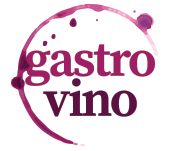
 ×
×
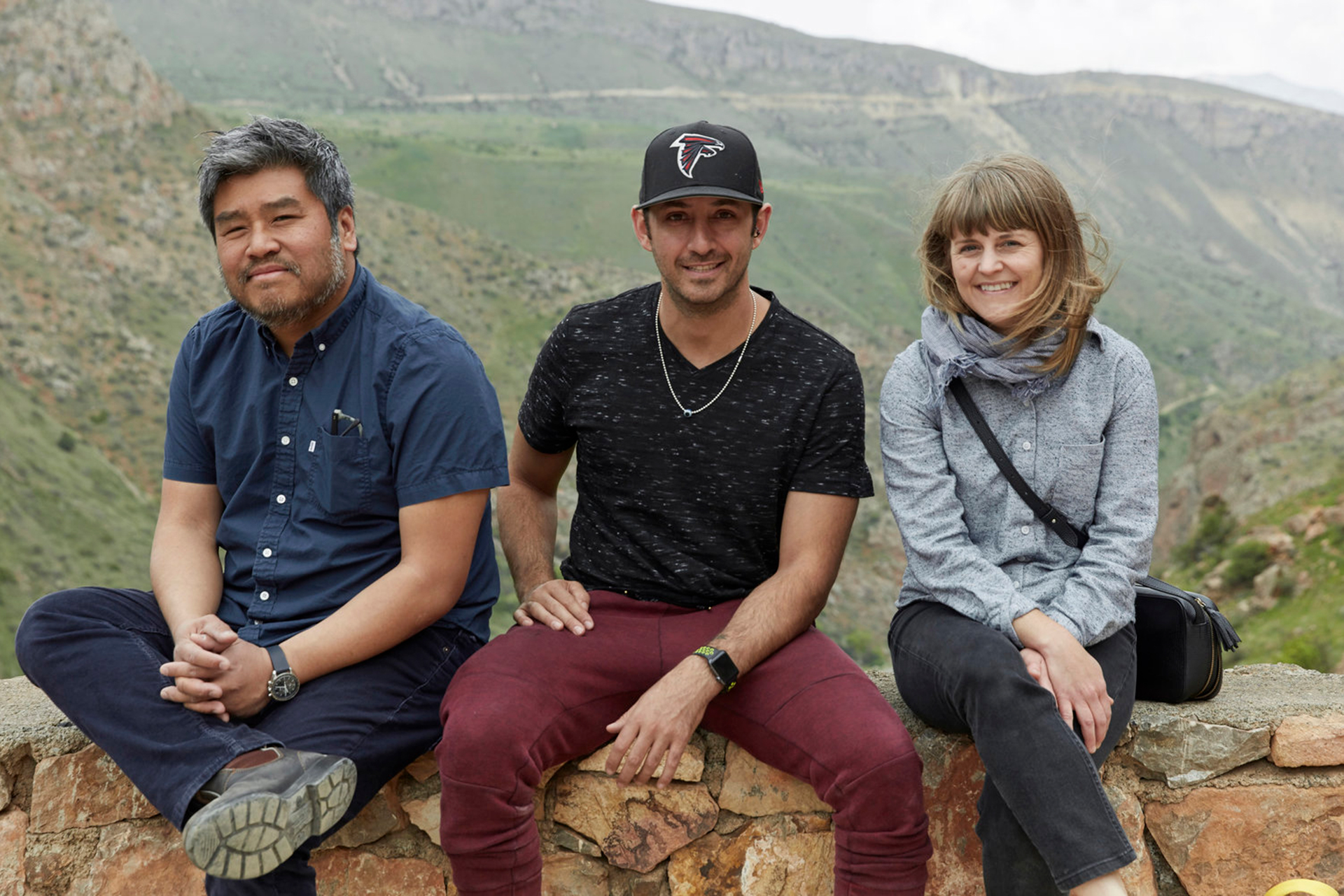

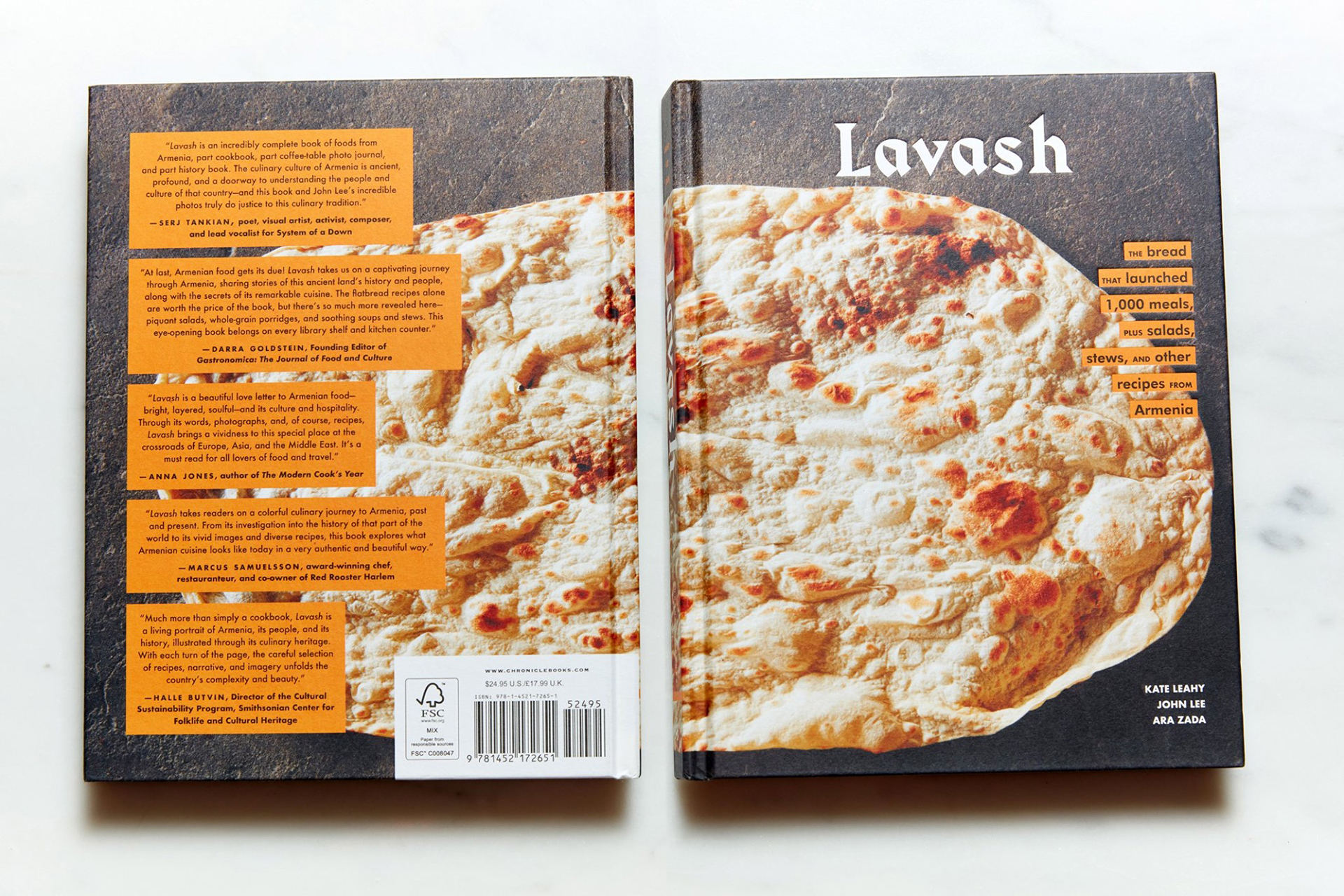

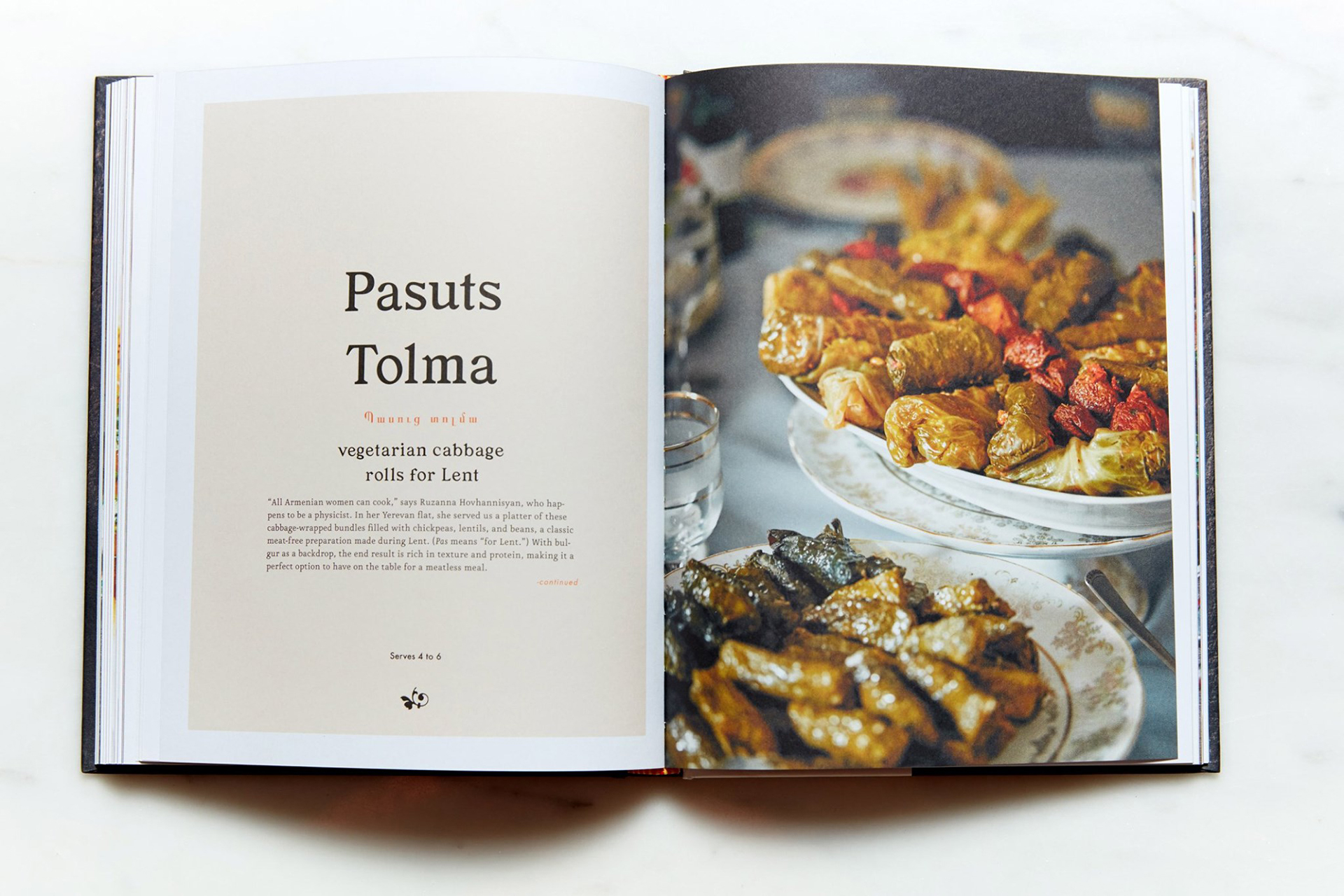
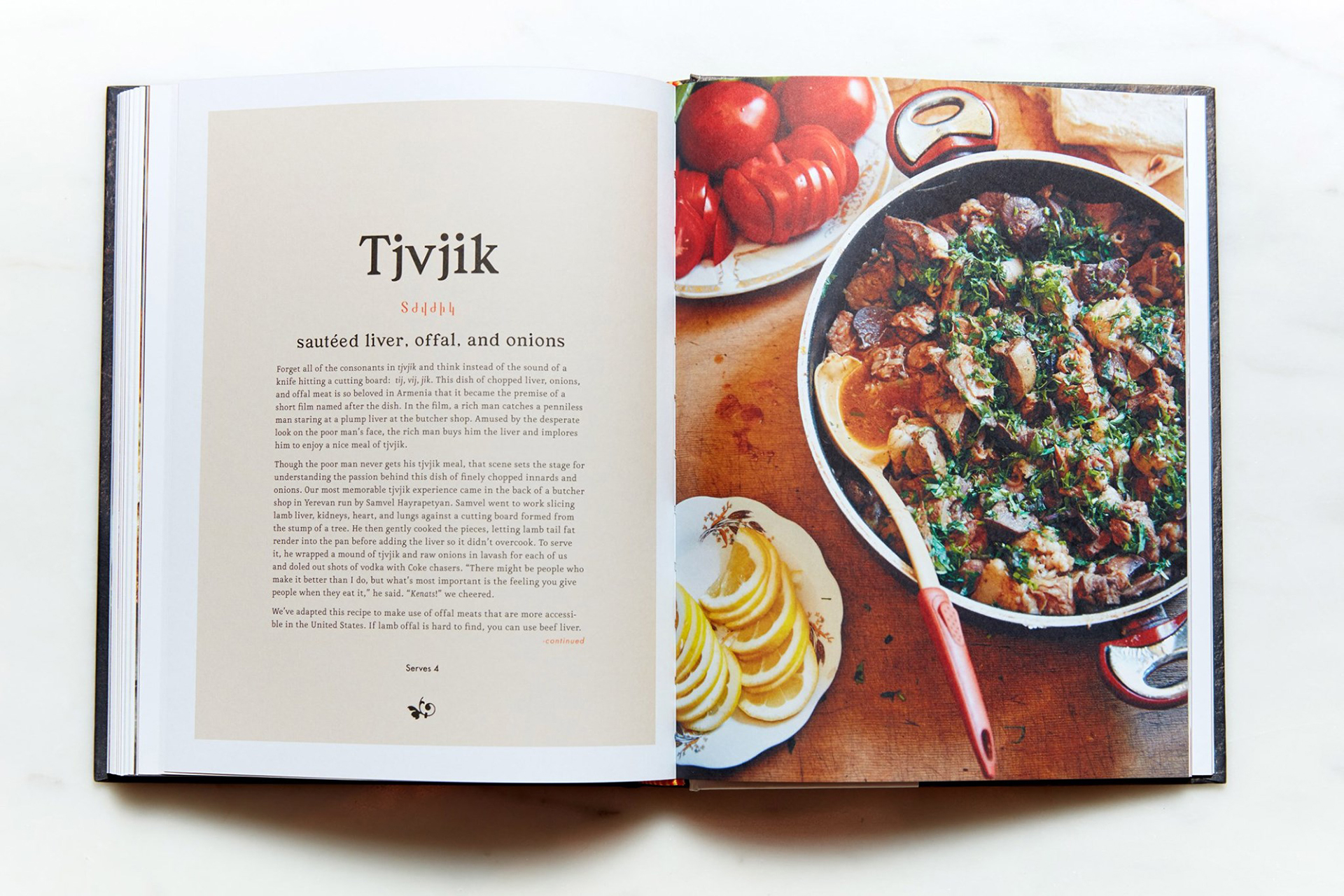
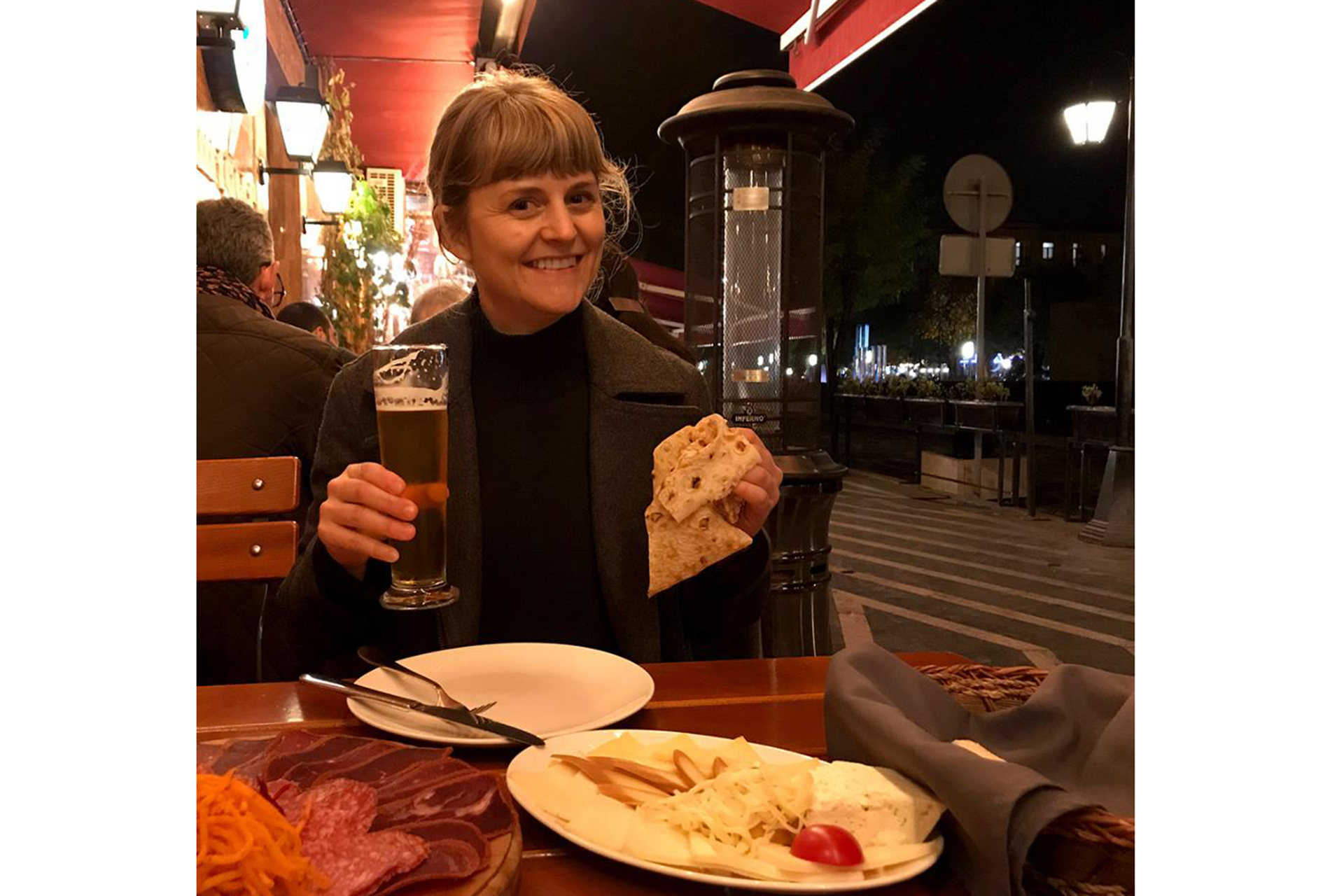
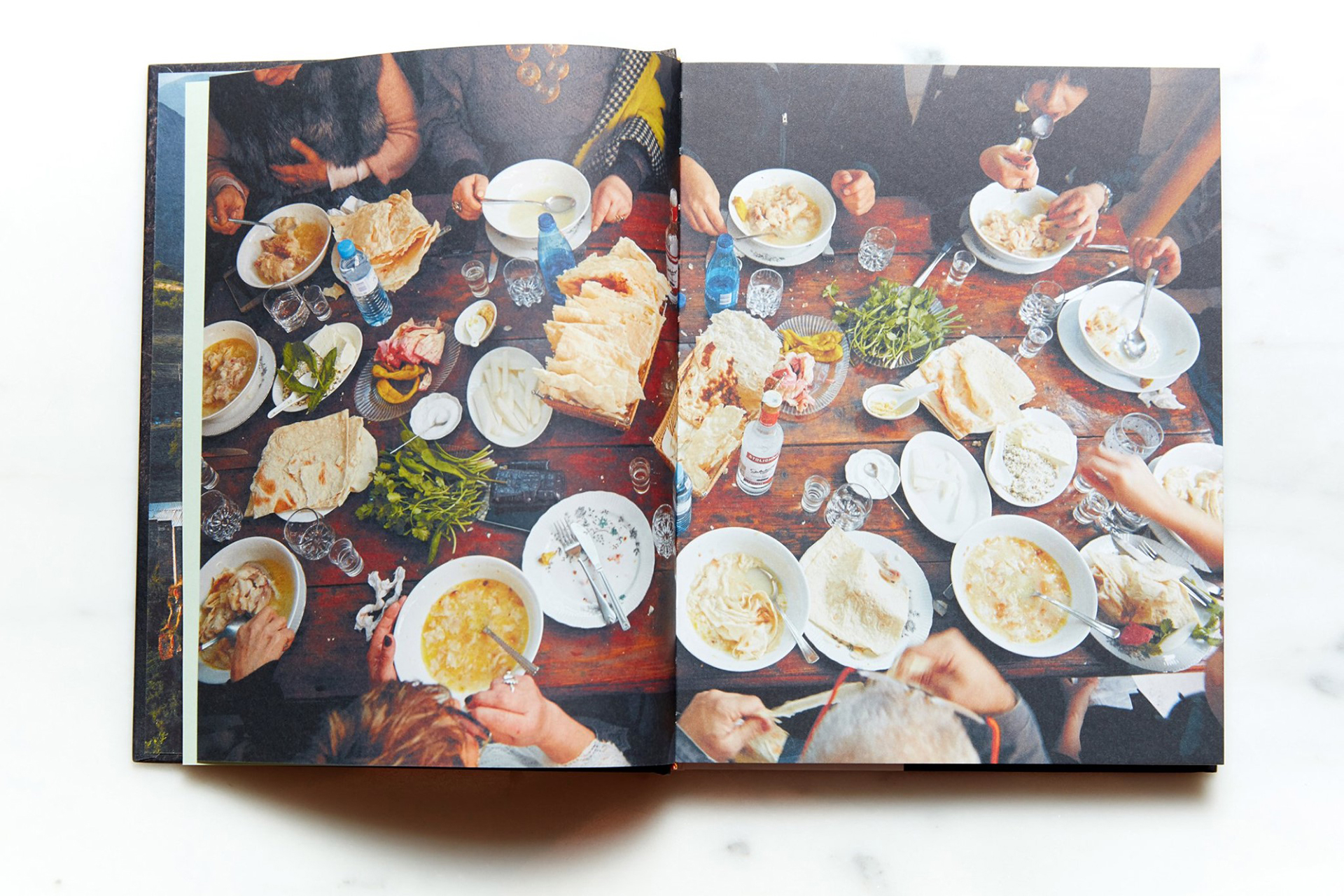


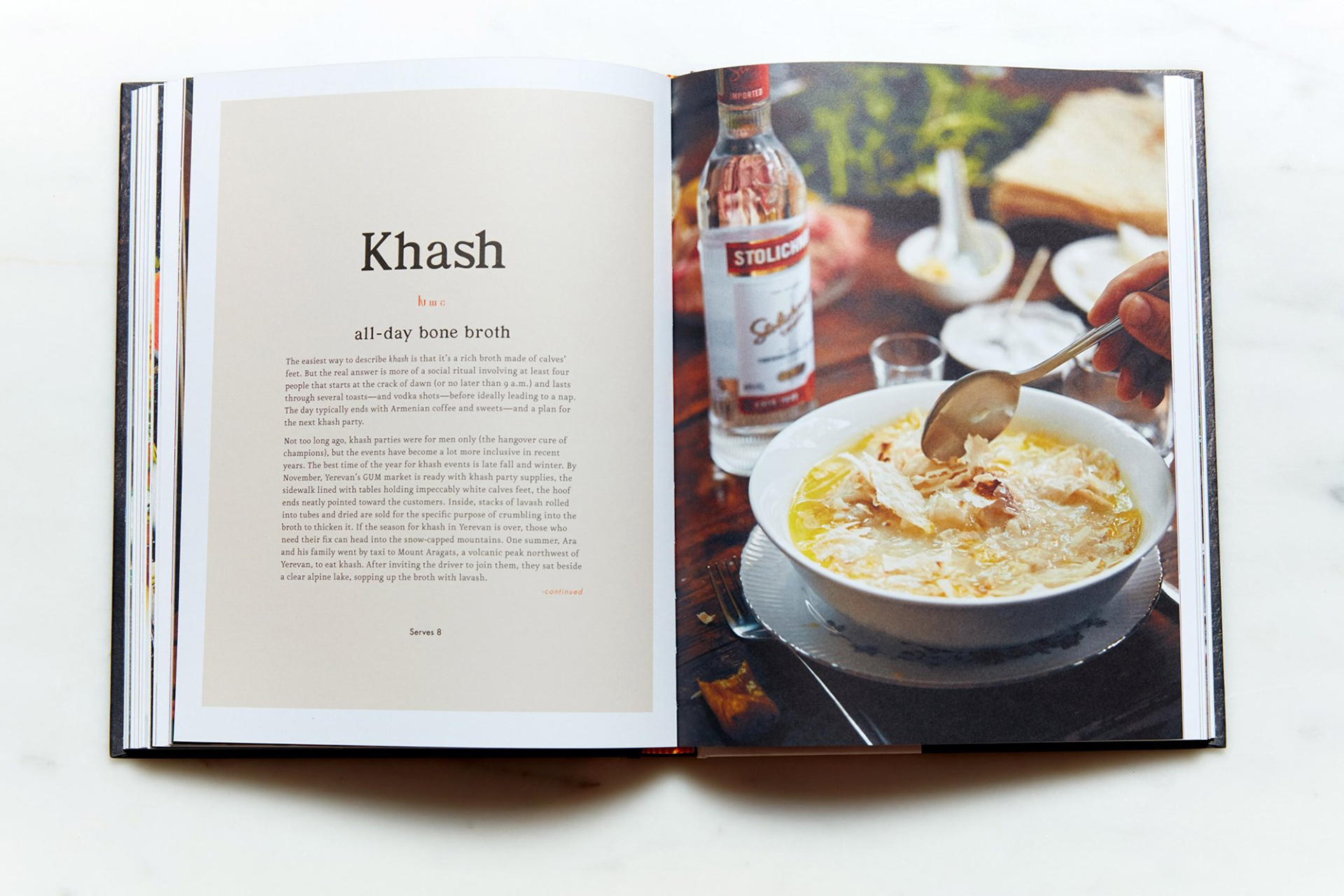
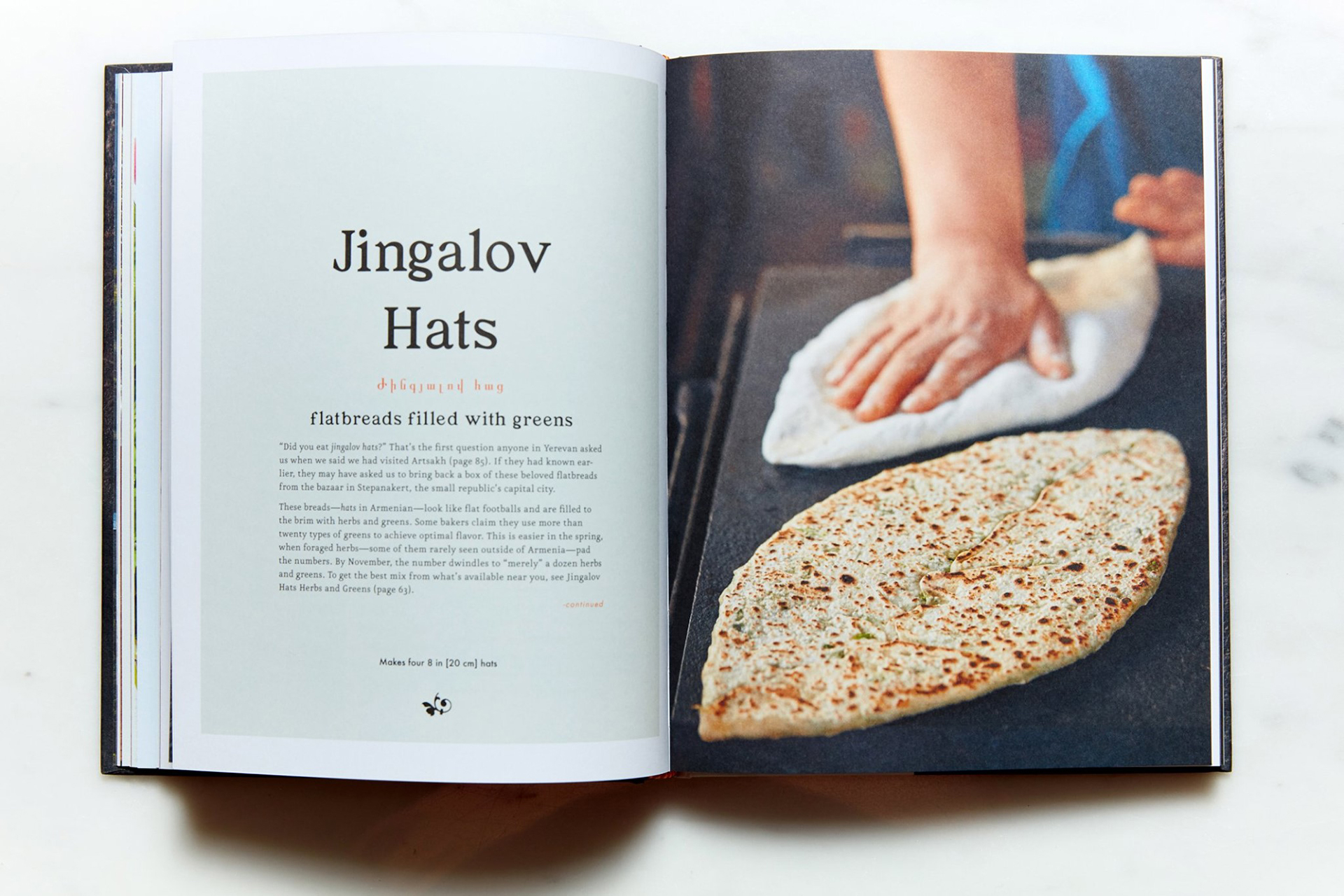




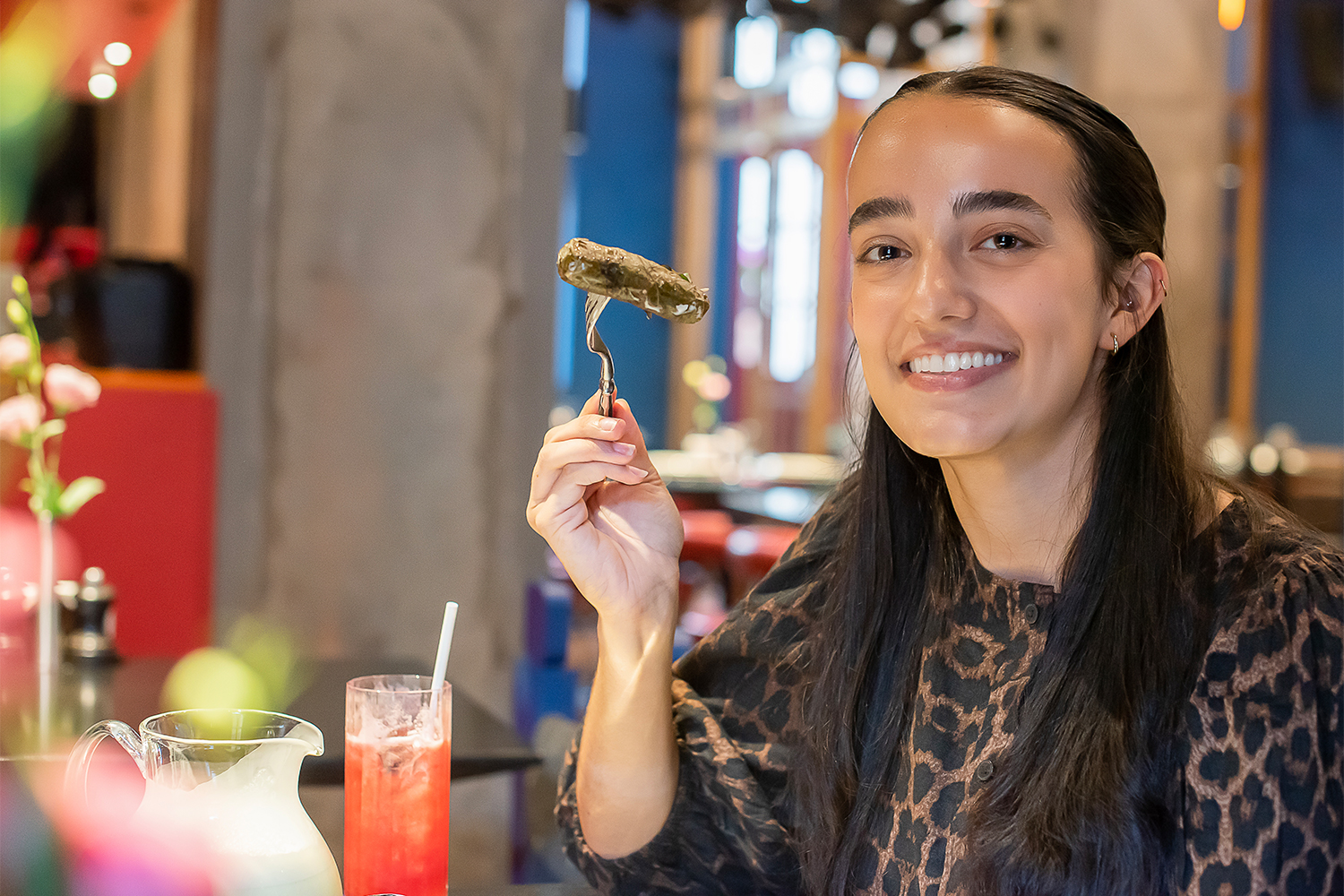
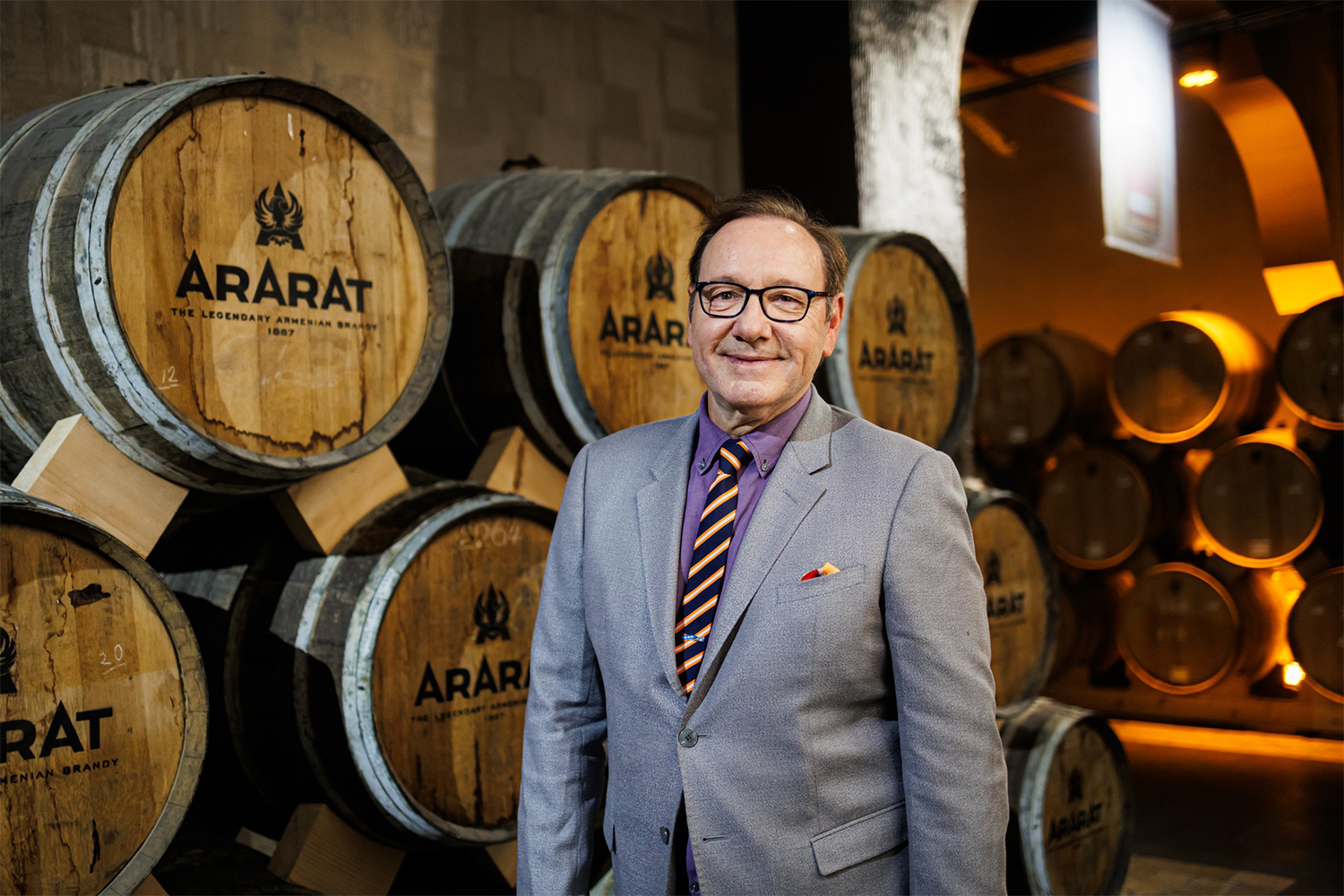


Comments
Dear visitors, You can place your opinion on the material using your Facebook account. Please, be polite and follow our simple rules: you are not allowed to make off - topic comments, place advertisements, use abusive and filthy language. The editorial staff reserves the right to moderate and delete comments in case of breach of the rules.